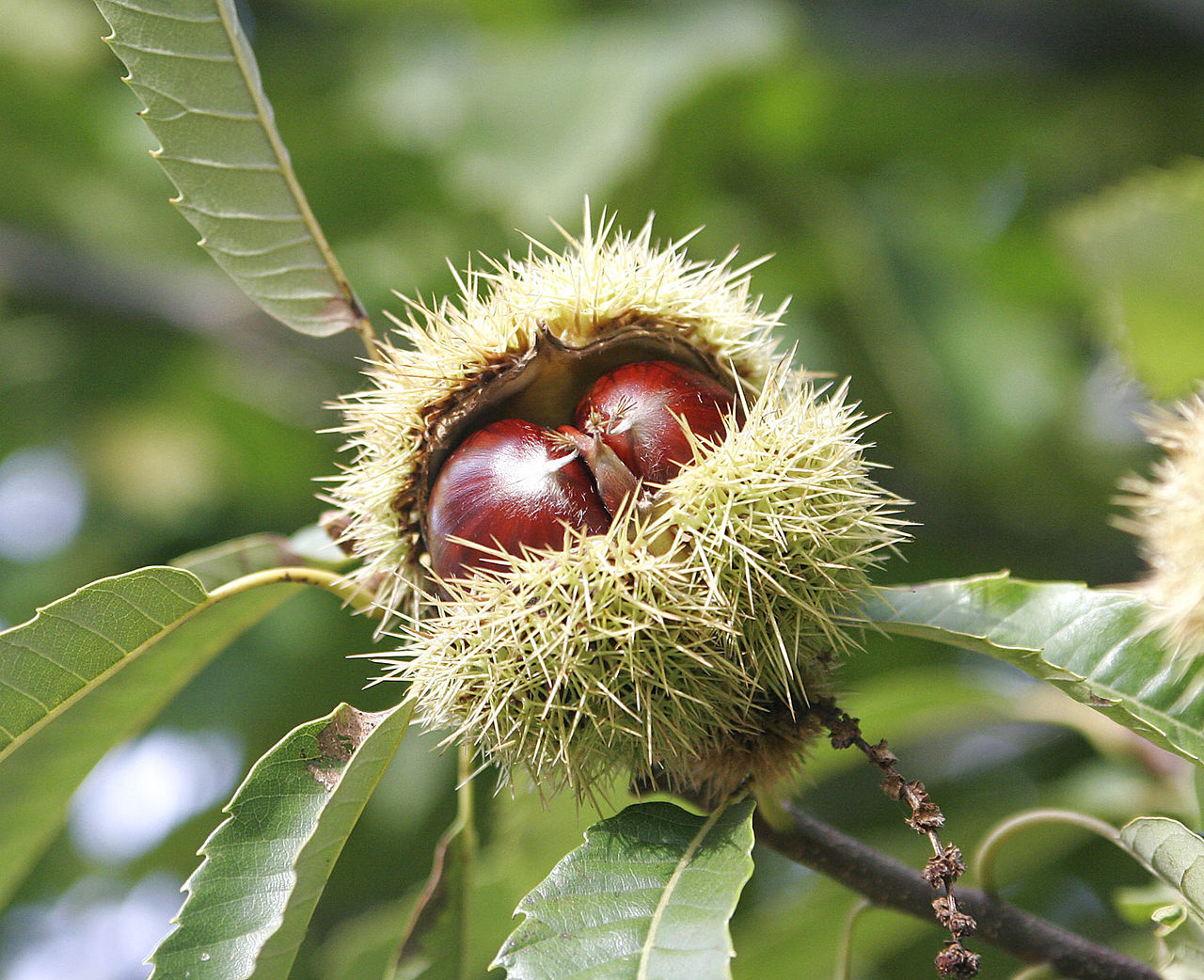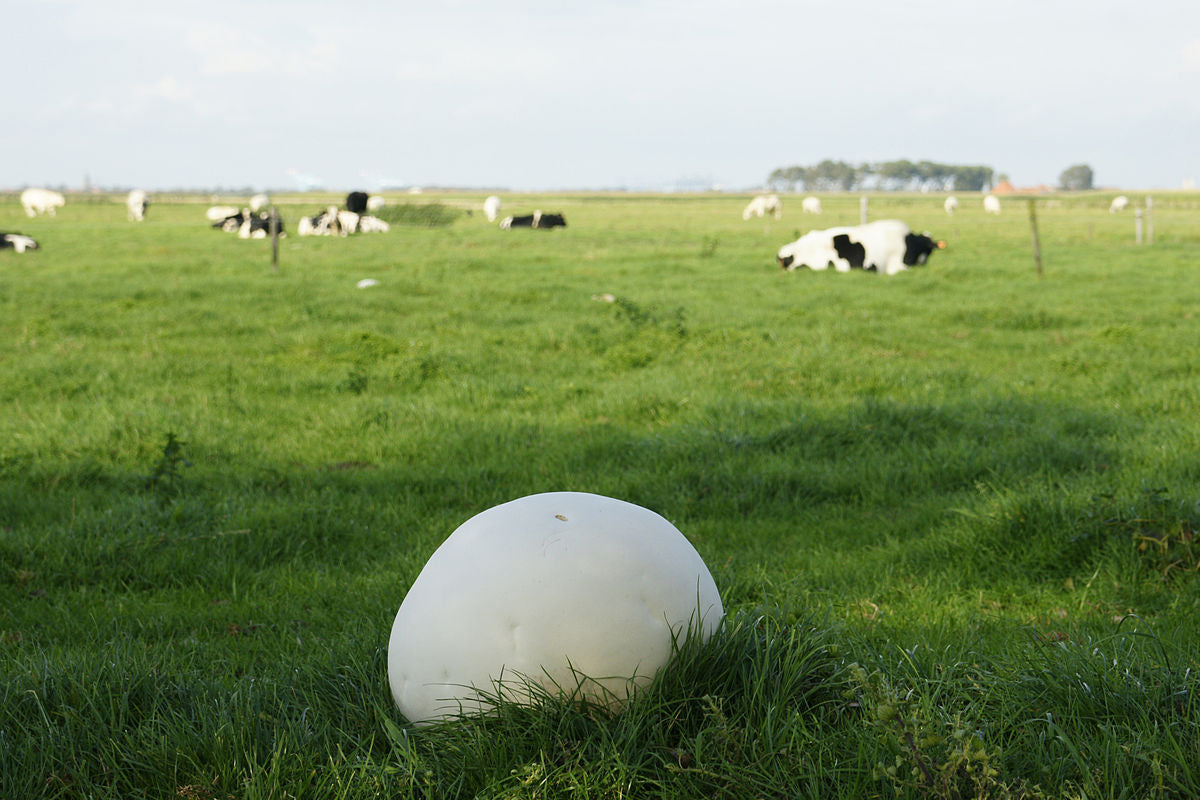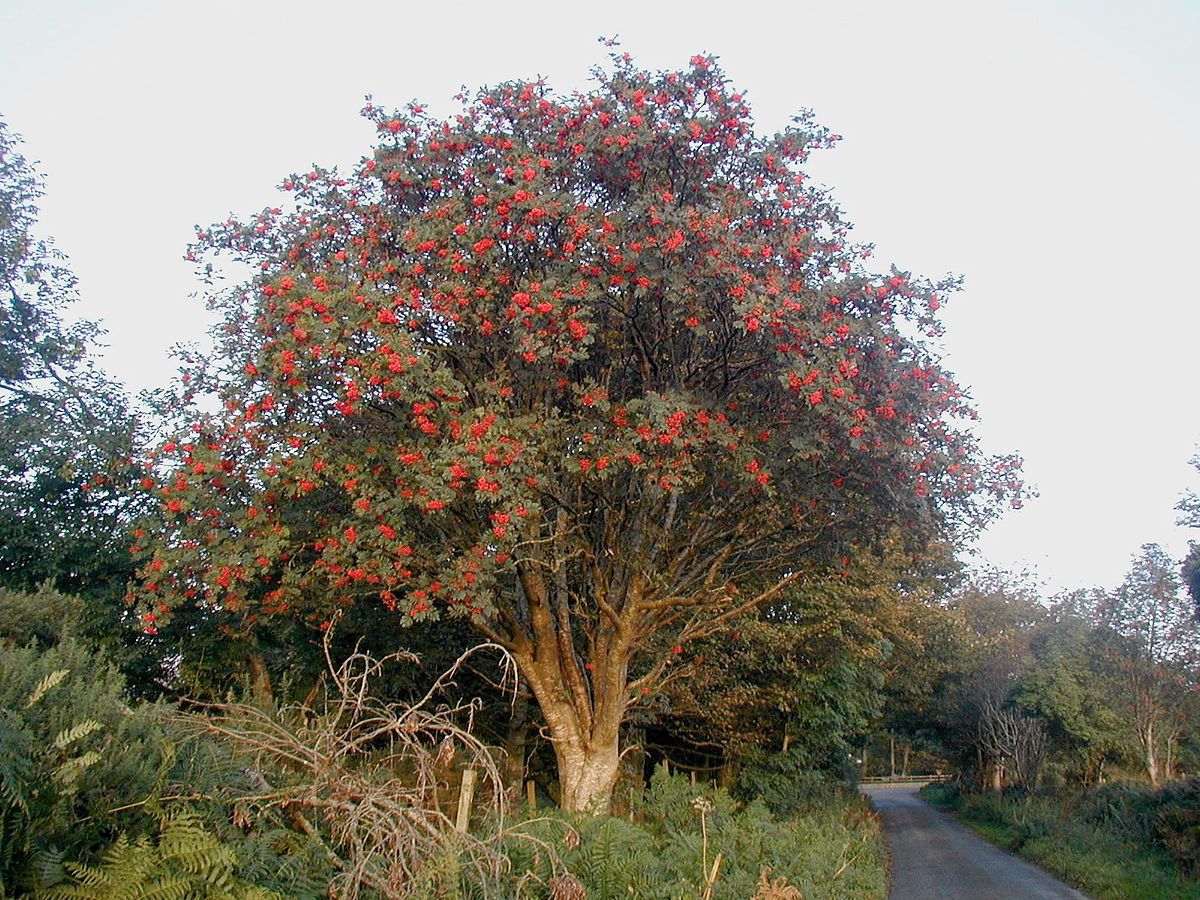
Wild Edible Of The Weeek - Week 34 "Sweet Chestnut"
Botanical Name : Castanea sativa
Common names : Sweet chestnut, Spanish chestnut, Portuguesse chestnut, Marron (French name for chestnut).
Physical appearance : Tall, non symmetrical, deciduous tree, growing up to 30 metres in height. The leaves are spear shaped and serrated. Flowers : the catkins have yellow male flowers and female green flowers below. Its fruit (the chestnuts) are carried in green spiky pods. Each pod contains one to three seeds.

(Above : Thousand year old sweet chestnut.)
Best places to find : Cultivated for thousands of years, common to Europe, particularly milder climes, the Sweet chestnut can regularly be found in woodlands and parks. Sweet chestnut is averse to lime rich soils.
Edible parts : The seeds or "chestnuts" can be eaten once cooked. They can be prepared in a multiple of ways and are very nutritious. Although some varieties of chestnut are edible raw, most are not, due to the high concentration of tannic acid. Eating raw chestnuts can lead to severe stomach upset. Chestnuts contain high amounts of carbohydrates, some fats and proteins, manganese, B6 and copper. Uniquely, they contain appreciable levels of vitamin C.

Time of year : Depending on variety and climate, chestnuts can be harvested as early as September to as late as November.
Recipe : Delicious when oven roasted (pierce with fork, place on baking tray and bake for 30 minutes on gas mark 6. Peel and eat warm). Be sure to pierce or score the tough outer skin otherwise they can literally explode when being roasted. Not dangerous but very messy to tidy up after.
Alternative recipe : "Creme de marron" - Bake 1 lb of chestnuts and peel. Place the peeled chestnuts into a sauce pan and cover with an inch of water. Boil until tender (approximately 15-30 mins). Allow to cool. In another pan, pour 200ml of water and add 1 lb (the amount of sugar is dictated by the weight of the chestnuts at a ratio of 1:1). Over a medium heat, stir until all sugar has dissolved. Turn off once sugar has dissolved. Now drain the chestnuts and place into a food processor, adding half of the sugar water. Once blended to a fairly smooth paste. Empty the puree into the pot containing the remaining sugar water solution. Place on a medium low heat and stir. Now add a teaspoon of vanilla extract and a pinch of salt. Stir thoroughly and cook the puree down till a thick consistency is attained (it should not fall off of a spoon). Place into an air tight container and keep refrigerated. Can be used in place of a nutty chocolate spread. Particularly good with pancakes and cream.
Interesting factoid : The world's oldest living specimen is estimated to be between 2000 and 4000 years old. Located on the slopes of Mt Etna in Sicily, it holds the world record for "world's greatest tree girth" measuring in at a whopping 57.9 metres.

(Above : Hundred Horse Chestnut, the world's biggest. Mt Etna, Sicily.)
NB! - Please be sure you know what you are picking, many plants look similar to each other and may be poisonous. If you are unsure, please seek professional instruction!
The Bushgear Team
Photos courtesy of Jean-Pol Grandmont, Fir0002 and LuckyLisp via Wiki Creative Commons Attribution


